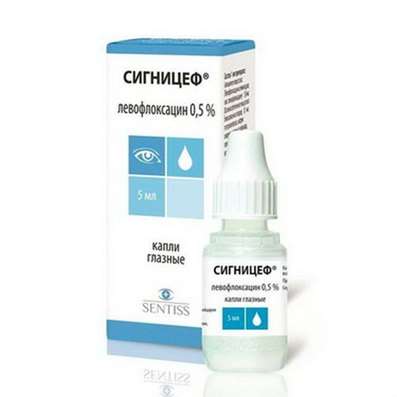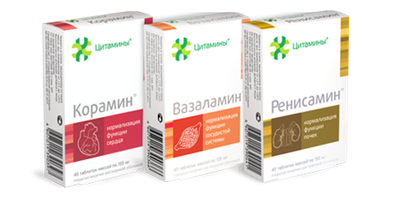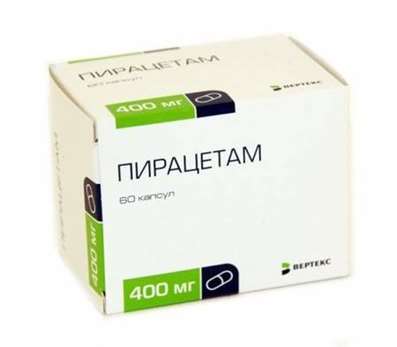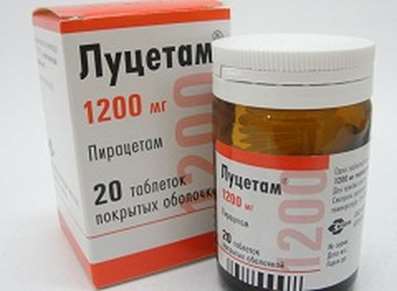Instruction for use: Garasone
I want this, give me price
Active substance Betamethasone + Gentamycin
ATX code S01CA05 Betamethasone in combination with antimicrobials
Pharmacological group
Glucocorticosteroids in combinations
Ophthalmic agents in combination
Nosological classification (ICD-10)
H01.0 Blepharitis
Blepharitis, Inflammation of the eyelids, Inflammatory diseases of the eyelids, Demodectic blepharitis, Superficial bacterial infection of the eyes, Superficial infection of the eye, Scaly blepharitis
H04.3 Acute and unspecified inflammation of lacrimal ducts
Dacryocystitis, Bacterial dacryocystitis, Chronic dacryocystitis
H10.1 Acute atopic conjunctivitis
Allergic conjunctivitis, Allergic eye disease, Allergic conjunctivitis, Allergic conjunctivitis is caused by chemical and physical factors, Allergic rhinoconjunctivitis,Allergic inflammation of the eye, Spring catarrh, Spring keratitis, Spring conjunctivitis, allergic Conjunctivitis, Perennial allergic conjunctivitis,Exacerbation of pollen allergy in the form of Syndrome rinokonyunktivalnogo, Acute allergic keratoconjunctivitis, Acute allergic conjunctivitis,Superficial bacterial eye infections,rhinoconjunctivitis, Seasonal allergic conjunctivitis, Seasonal conjunctivitis, Sennoz, Chronic allergic keratoconjunctivitis, Chronic allergic conjunctivitis
H10.5 Blepharoconjunctivitis
Chronic Blepharoconjunctivitis, Blepharoconjunctivitis, Staphylococcal blepharoconjunctivitis
H10.9 Conjunctivitis, unspecified
Trahomny conjunctivitis, catarrhal conjunctivitis, Giperpapillyarny conjunctivitis, Non-infectious conjunctivitis, purulent conjunctivitis, Purulent conjunctivitis form, Year-round conjunctivitis, purulent conjunctivitis, Subacute conjunctivitis, Secondarily infected with conjunctivitis
H15.1 Episcleritis
Acute episcleritis, Chronic episcleritis
H16 Keratitis
Adenoviral keratitis, Bacterial keratitis, Spring keratitis, Deep keratitis without epithelial damage, Discoid keratitis, Dendritic keratitis, Keratitis rosacea, Keratitis with destruction of the cornea, Superficial keratitis, Point keratitis, Traumatic keratitis, Superficial point keratitis
H16.2 Keratoconjunctivitis
Chronic allergic keratoconjunctivitis, Bacterial keratoconjunctivitis, Deep forms of adenovirus keratoconjunctivitis, Infectious conjunctivitis and keratoconjunctivitis caused by Chlamydia trachomatis, Acute allergic keratoconjunctivitis, Spring keratoconjunctivitis, Phlyctenular keratoconjunctivitis
H60 Otitis externa
Infections of ENT organs, Infections of the external auditory canal, Infectious-inflammatory diseases of the ear, Acute catarrhal inflammation of the external auditory canal, Infections of the external ear
S05 Injury of the eye and orbit
Wounds of the eye penetrating, Non-penetrating wound of the eyeball, Superficial injury of the cornea, Post-traumatic keratopathy, Post-traumatic central retinal dystrophy, Penetrating wound of the cornea, Condition after eye injuries, Condition after eyeball injuries, Penetrating corneal wounds, Injuries to eye tissues, Injuries to the cornea, Injury of anterior part of eye
T30 Thermal and chemical burns, unspecified
Pain syndrome with burns, Pain in burns, Pain with burns, Sluggishly healing post-burn wounds, Deep burns with a wet scab, Deep burns with abundant compartments, Deep burn, Laser burn, Burn, Burning of the rectum and perineum, Burn with mild exudation, Burn disease, Burn injury, Superficial burn, Superficial burn of I and II degree, Superficial skin burns, After-burn trophic ulcer and wound, Post-burn complication, Loss of fluid during burns, Sepsis burn, Thermal burns, Thermal skin lesions, Thermal burn, Trophic after-burn ulcers, Chemical burn, Surgical burn
Composition and form of release
Eye and ear drops 1 ml
Gentamicin (in the form of gentamycin sulfate) 3 mg
Betamethasone (in the form of betamethasone sodium phosphate) 1 mg
Auxiliary substances: purified water; Sodium hydrogen phosphate dihydrate; Sodium dihydrogen phosphate dihydrate; sodium chloride; Sodium citrate dihydrate; Sodium borate; Disodium edetate; Benzalkonium chloride (as a preservative)
In a polyethylene bottle-dropper for 5 ml; In a pack of cardboard 1 bottle.
Description of dosage form
Transparent colorless or slightly yellowish solution, which does not contain extraneous inclusions.
pharmachologic effect
Pharmacological action - anti-inflammatory, anti-allergic.
Pharmacodynamics
Garasone® is a combined preparation, the effect of which is due to the components that make up its composition.
Gentamicin sulfate is a broad-spectrum antibiotic from the aminoglycoside group. Possesses bactericidal action. Effective against coagulase-positive and coagulase-negative staphylococci (including Staphylococcus aureus), Escherichia coli, indolpositive and indolotricative species of Proteus, Pseudomonas aeruginosa, various species of the Klebsiella spp. Group, Enterobacter spp., Serratia spp., And species of Citrobacter spp., Salmonella spp., Shigella spp., Moraxella spp. (Including Moraxella lacunata), Neisseria spp., In particular Neisseria gonorrhoeae.
Betamethasone sodium phosphate-glucocorticosteroids, has a local anti-inflammatory effect, suppressing cellular and fibrinous exudation and normalizing the increased permeability of capillaries, which is manifested by a decrease in local hyperemia, edema and effusion.
With allergic or traumatic lesions of the cornea, SCS suppresses the proliferation of fibroblasts and post-inflammatory neovascularization of the cornea, Keeping its transparency.
Indications
Staphylococcal blepharoconjunctivitis, keratoconjunctivitis, secondarily infected conjunctivitis;
Blepharitis, keratitis, episcleritis, dacryocystitis, barley (meibomite);
Trauma of the anterior part of the eye, resulting from the ingress of foreign bodies, exposure to radiation, thermal and chemical burns, and also in the postoperative period;
Acute and chronic otitis externa, secondary infections of the external auditory canal;
Eczema, seborrheic and contact dermatitis.
Contraindications
Hypersensitivity to any of the components of the drug;
Keratitis caused by the herpes simplex virus (treelike keratitis);
Viral diseases of the cornea and conjunctiva (for example, with chicken pox);
Mycobacterial and fungal infections of the eye or ear;
trachoma;
Conditions, accompanied by thinning of the cornea and sclera (for example, after removal from the cornea of the foreign body);
Absence or perforation of the tympanic membrane;
Children's age till 8 years;
pregnancy;
Lactation period (due to lack of information);
Wearing soft contact lenses (due to the presence of chloride in the composition of benzalkonium).
Carefully:
Open angle glaucoma, high degree myopia;
Diabetes mellitus in a family history;
Infection caused by the herpes simplex virus.
pregnancy and lactation
Do not prescribe in pregnancy, only if the expected effect of therapy exceeds the potential risk to the fetus.
It is not known whether the components of Garasone® are excreted in breast milk. Therefore, during the treatment, it may be necessary to stop breastfeeding.
Side effects
Perhaps a brief occurrence of a burning sensation, itching or dry skin at the site of application.
Adverse effects associated with exposure to GCS on the eye: increased intraocular pressure, glaucoma, optic nerve damage, reduced visual acuity and narrowing, development of posterior subcapsular cataract, delayed wound healing, the appearance of filtering vesicles after surgical cataract treatment, development of secondary eye infection Herpes zoster), acute anterior uveitis, corneal and scleral perforation, mydriasis, impaired ccomodation of the eye, ptosis.
When using antibiotics for the treatment of the eye, allergic reactions may develop. Transient eye irritation has been reported in connection with the use of gentamycin sulfate.
Dosing and Administration
Eye Diseases
Conjunctival, the dosage should be determined for each patient individually.
Usually 1-2 drops are instilled in the conjunctival sac of the affected eye 3-4 times a day.
In the acute phase, the frequency of application can be increased to 2 drops every hour or every 2 hours. Later, when the course of the disease becomes controlled, the frequency of application decreases. The total duration of treatment depends on the nature and severity of the disease. In the absence of therapeutic effect within 14 days after the start of treatment, further use of the drug appears to be inexpedient.
Diseases of the ear
In the external auditory canal, before applying the drug, the external auditory canal should be free.
The recommended initial dose is 3-4 drops 2-4 times a day. The patient should lie on his side so that the affected ear is turned upwards; After instillation of the solution should remain in this position for a few more minutes to ensure the penetration of the drug inside the ear canal.
With a reduction in inflammatory phenomena, you should gradually reduce the dosage and stop using the drug after the symptoms disappear.
If necessary, inside the external auditory canal, you can insert a cotton swab impregnated with Garasone®. Tampon should be kept moist, moistened with the drug every 4 hours. Every 24 hours, the tampon should be replaced.
In chronic diseases, cessation of treatment should be gradual, by reducing the frequency of use of the drug.
Overdose
Symptoms: Excessive or prolonged use of GCS for topical application can lead to oppression of the pituitary and adrenal glands, up to the development of secondary adrenal insufficiency.
Treatment: symptomatic therapy, incl. Correction of water-electrolyte balance. Gradual withdrawal of the drug.
special instructions
The preparation Garasone® is intended for topical use only. Do not administer subconjunctival or into the anterior chamber of the eye.
The absence of a rapid clinical effect after the use of the drug serves as the basis for an additional examination in order to clarify the diagnosis.
If the signs of the disease persist or if it recurs, despite a completely completed course of treatment, it is desirable to carry out a bacteriological study of smears from the conjunctiva to determine the sensitivity of the pathogen to antibiotics.
When prescribing Garasone® for a period of 10 days or more, it is necessary to measure intraocular pressure. It is recommended to perform tonometry of the eyes using a slit lamp. Patients whose family history includes patients with open-angle glaucoma, high degree myopia, diabetes mellitus constitute a risk group for increasing intraocular pressure in the treatment of local SCS
It is known that with diseases that cause thinning of the cornea or sclera, the local application of GCS can lead to perforation of the eyeball. In this regard, it is not recommended to start with the combination "antibiotic-anti-inflammatory agent" treatment of corneal ulcers of bacterial etiology, which can be caused by Pseudomonas aeruginosa. It is advisable at the beginning of treatment to use only an antibacterial agent. If there is an answer to antibacterial therapy, it may be recommended to add an anti-inflammatory agent to the treatment to minimize fibrotic reaction and prevent the formation of corneal scarring.
In acute purulent processes in the eye, SCS can mask an existing infection or potentiate it.
In the treatment of infection due to the herpes simplex virus, SCS should be used extremely cautiously.
In the case of a local antibiotic from the aminoglycoside group, one should keep in mind the possibility of its ototoxic effect.
Studies in animals have shown that gentamicin can be absorbed into the blood when applied topically in the area of the external auditory canal. After the appointment in this way it was determined in the serum and urine.
Long-term local use of antibiotics or GCS may lead to an increase in the number of resistant strains of microorganisms, including fungi.
In such a case, as well as in case of irritation or hypersensitivity to Garasone®, discontinue treatment with this drug and conduct appropriate therapy.
Between the various aminoglycosides and GCS, cross allergic reactions were noted.
To prevent widespread infection, one bottle should be avoided for simultaneous treatment of otitis and eye infections. Use of a pipette by more than one person is unacceptable (leads to the spread of infection).
With prolonged treatment with the drug, it should be canceled gradually.
Pediatric Use
Safety and effectiveness of the drug in children under the age of 8 years is not established.
storage Conditions
At a temperature not higher than 25 ° C.
Keep out of the reach of children.
Shelf life
3 years.
Do not use after the expiry date printed on the package.

 Cart
Cart





